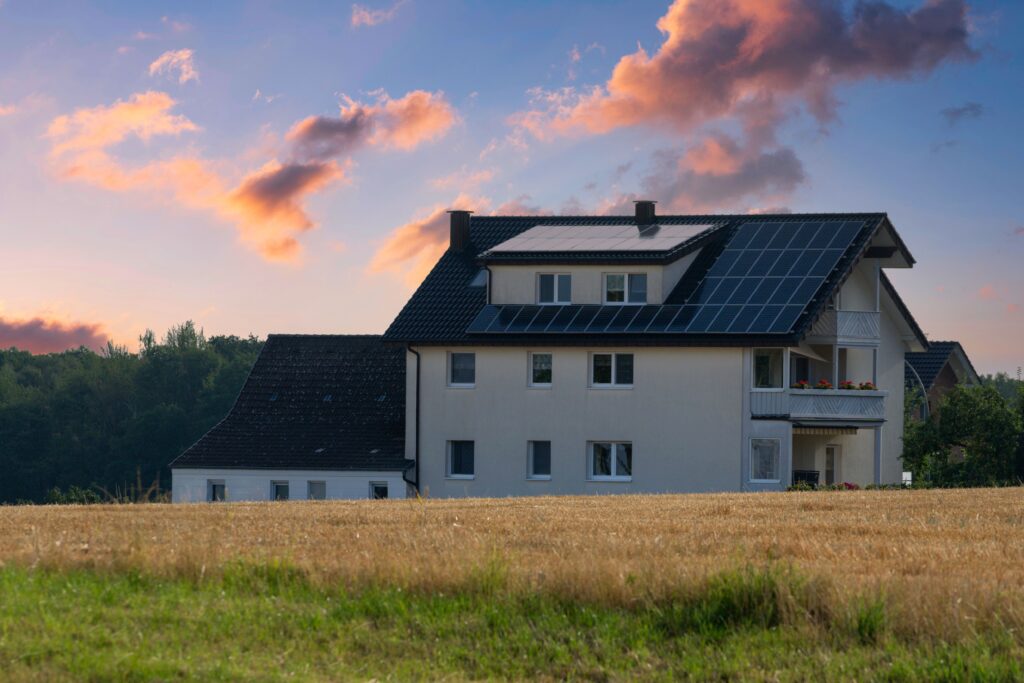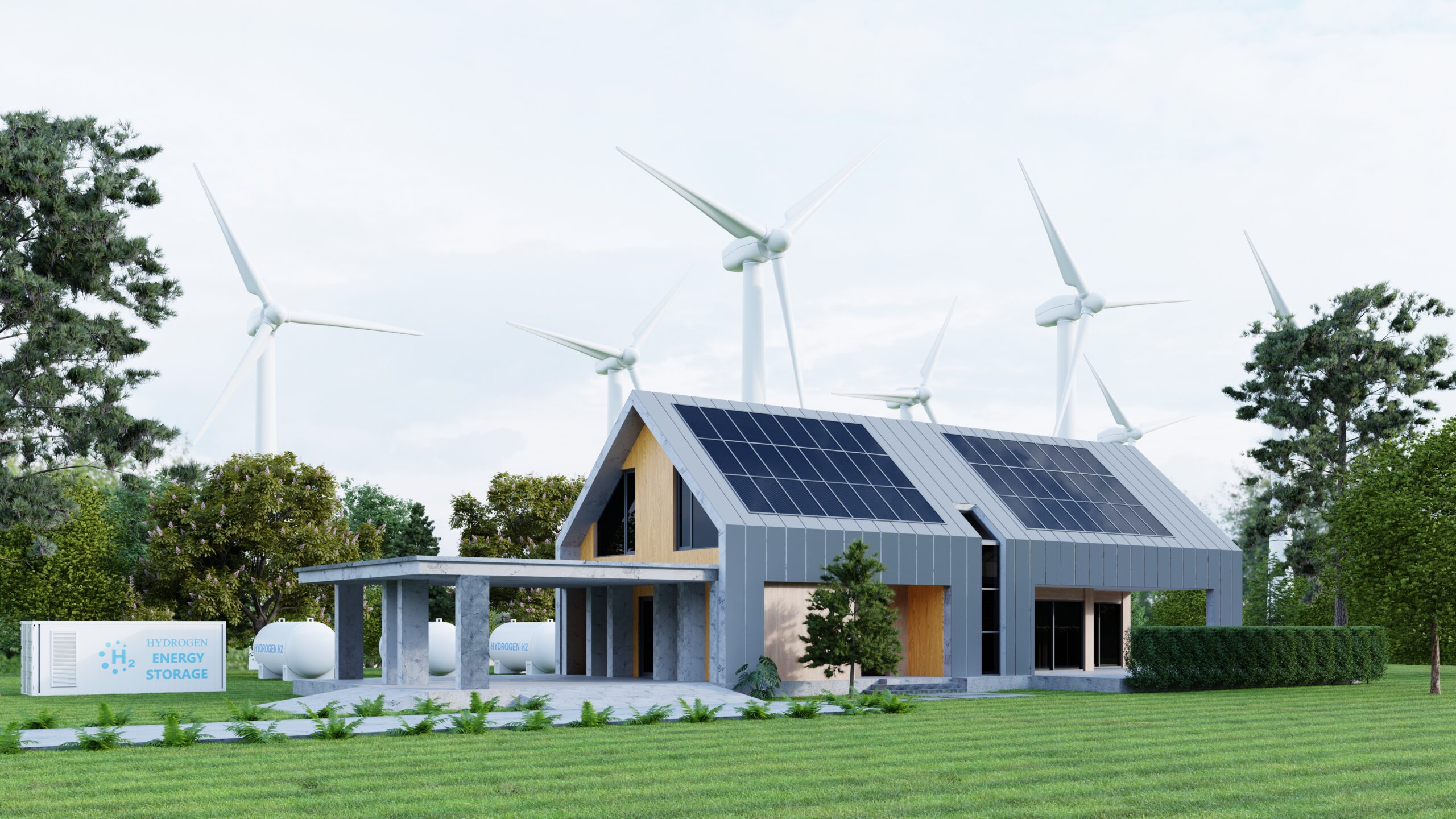Sustainability is no longer just a trend—it’s a necessity. As homeowners become more environmentally conscious, green building practices have become a top priority in custom home design. But what exactly does “green building” mean, and how can it benefit you?
Building a sustainable home isn’t just about reducing environmental impact; it’s about saving energy, lowering costs, and creating a healthier living space. However, many homeowners struggle to understand where to start and what features truly make a difference. From energy-efficient systems to eco-friendly materials and innovative storage solutions for custom home designs, every choice contributes to a home that’s functional, efficient, and tailored to your lifestyle.
In this guide, we’ll explore the problems with traditional construction, the benefits of green building, and the best sustainable strategies to incorporate into your custom home.

The Problem: Why Traditional Construction is Unsustainable
For years, traditional construction methods have overlooked environmental impact. Many homes are built using energy-hungry materials, inefficient designs, and outdated building techniques. This leads to:
- High energy consumption – Homes account for nearly 40% of global energy use.
- Excessive waste – Construction generates millions of tons of landfill waste annually.
- Poor indoor air quality – Harmful chemicals in building materials can impact health.
- High long-term costs – Poor insulation and inefficient systems drive up utility bills.
With rising energy prices, climate change concerns, and stricter building regulations, homeowners need better solutions. That’s where green building comes in.
The Benefits of Green Building in Custom Homes
Sustainable homes aren’t just better for the planet—they’re better for you, too. Here’s why:
1. Energy Efficiency Reduces Utility Bills
Green homes are designed to consume less energy, saving homeowners thousands of dollars over time.
Key Energy-Saving Features:
- High-performance insulation keeps homes warm in winter and cool in summer.
- LED lighting reduces energy use by up to 80% compared to incandescent bulbs.
- Energy Star-rated appliances use 20-50% less energy than traditional models.
🔹 Pro Tip: Invest in a solar panel system to generate your own electricity and reduce dependency on the grid.
2. Lower Carbon Footprint
Buildings generate nearly 40% of global carbon emissions. A green home minimizes this impact by using:
- Recycled and locally sourced materials to reduce transportation emissions.
- Sustainable wood from responsibly managed forests.
- Low-carbon concrete alternatives to cut emissions by 50% or more.
🔹 Pro Tip: Use bamboo flooring—it grows 15 times faster than traditional hardwoods and absorbs more carbon dioxide.
3. Improved Indoor Air Quality for Healthier Living
Traditional homes contain toxins and pollutants from paints, adhesives, and synthetic materials. Green homes eliminate harmful chemicals, creating a healthier living environment.
How to Improve Indoor Air Quality:
- Low-VOC (Volatile Organic Compound) paints and finishes to reduce toxins.
- Natural ventilation systems to circulate fresh air.
- Non-toxic flooring options like cork or reclaimed wood.
🔹 Pro Tip: Install air-purifying plants like snake plants and peace lilies to naturally filter toxins from the air.
4. Water Conservation Lowers Bills and Preserves Resources
The average household uses 300 gallons of water per day. A green home incorporates water-saving features to reduce waste.
Water-Efficient Upgrades:
- Low-flow faucets and showerheads cut water use by 30-50%.
- Rainwater harvesting systems store water for irrigation.
- Drought-resistant landscaping minimizes outdoor water usage.
🔹 Pro Tip: Choose permeable paving materials for driveways and walkways to allow rainwater to absorb into the ground instead of causing runoff.
5. Smart Home Technology Enhances Efficiency
Green homes often integrate smart technology to optimize energy use.
Top Smart Home Features:
- Smart thermostats adjust temperature settings based on usage patterns.
- Automated lighting systems turn off when rooms are unoccupied.
- Leak detection systems prevent water waste and damage.
🔹 Pro Tip: Use a home energy monitoring system to track and adjust energy consumption in real-time.
Best Green Building Practices to Incorporate into Your Custom Home
Now that we understand the benefits, let’s explore specific strategies for creating a sustainable home.
1. Passive Home Design: The Foundation of Energy Efficiency
Passive home design optimizes natural resources to reduce energy demand.
Key Passive Design Strategies:
- Strategic window placement to maximize natural light and heat.
- South-facing orientation to capture the sun’s warmth in colder climates.
- Deep roof overhangs to provide shade in summer while allowing sunlight in winter.
🔹 Pro Tip: Install triple-pane windows for maximum insulation and energy savings.
2. High-Performance Insulation and Airtight Construction
A well-insulated home reduces heating and cooling needs. The best options include:
- Spray foam insulation for a tight seal.
- Rigid foam boards for superior thermal resistance.
- Structural insulated panels (SIPs) for walls and roofs.
🔹 Pro Tip: Seal gaps and cracks around windows and doors with weatherstripping to prevent heat loss.
3. Renewable Energy Systems
Switching to renewable energy makes your home self-sufficient.
Top Renewable Energy Solutions:
- Solar panels for electricity generation.
- Geothermal heat pumps for efficient heating and cooling.
- Wind turbines for homes in windy regions.
🔹 Pro Tip: Pair solar panels with battery storage to store excess power for use at night.
4. Sustainable Building Materials
The materials you choose can impact both the environment and your home’s efficiency.
Best Eco-Friendly Building Materials:
- Reclaimed wood for flooring and beams.
- Recycled metal roofing for durability and sustainability.
- Hempcrete and rammed earth for natural insulation and thermal regulation.
🔹 Pro Tip: Use prefabricated building components to reduce construction waste.

5. Green Roofing and Landscaping
Your roof and landscaping play a major role in sustainability.
Green Roof Options:
- Cool roofs reflect sunlight, reducing indoor temperatures.
- Living roofs covered in vegetation improve insulation and air quality.
Eco-Friendly Landscaping Ideas:
- Native plants require less water and maintenance.
- Drip irrigation systems conserve water.
- Permeable pavers reduce stormwater runoff.
🔹 Pro Tip: Create an outdoor rain garden to absorb excess water naturally.
Challenges of Green Building (and How to Overcome Them)
While green homes offer long-term savings, they can present upfront challenges:
1. Higher Initial Costs
- Solution: Focus on high ROI features like insulation, energy-efficient windows, and solar panels.
2. Finding Experienced Green Builders
- Solution: Work with a builder specializing in LEED or Passive House certification.
3. Navigating Building Codes and Permits
- Solution: Research local green building incentives and rebates.
Final Thoughts: Why Green Homes are the Future
Green building isn’t just about reducing environmental impact—it’s about creating a home that works smarter, lasts longer, and saves you money. Incorporating energy-efficient systems, sustainable materials, and innovative storage solutions for custom home designs ensures your home is not only eco-friendly but also highly functional and tailored to your needs.
Should You Build a Green Home?
- You want to reduce long-term energy costs.
- You care about sustainability and eco-friendly living.
- You’re looking to improve indoor air quality and comfort.
- You want to increase property value and resale potential.
Ready to build a sustainable home? No7 Development specializes in eco-friendly custom homes designed for efficiency, comfort, and sustainability. Contact us today to start planning your green dream home!

